Top ten books about science that influenced my career
Bill Dennison ·The Sea Around Us, Rachel Carson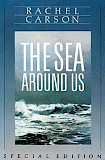
In seventh grade in Ohio, in the heartland of America and without ever actually seeing the ocean, I read Rachel Carson's The Sea Around Us. I had become very enamored in everything to do with water, but my experience was confined to freshwater in the streams, rivers and lakes of Ohio, Michigan and Canada. I chose The Sea Around Us for a book report in science class and recall that I finished summarizing the book, but still needed more words to complete the assignment. I began to write about how much I liked the book and how it exposed me to an aspect of the world that I had not experienced. It turned out that the teacher was looking for this aspect of reflection and I was pleasantly surprised to receive top marks. The Sea Around Us really did change my life, as it stimulated my lifelong interest in the sea. I was also taken by Rachel Carson's poetic descriptions and sense of wonder about the natural world.
The Silent World, Jacques-Yves Cousteau
I wanted to learn to SCUBA dive at a young age and found a course that allowed me to learn at a Boy's Club at the age of twelve. What had inspired me were National Geographic specials by Jacques Cousteau on television and this led me to read his book The Silent World. The mixture of water-related adventure, travel to exotic places and nature was a perfect mix for a young boy who loved being in the water. The Silent World was indeed a new world that awaited me when I was old enough to find my way to the ocean. Cousteau was not a scientist, but he did embrace science in his explorations, which kindled my interest in studying the ocean. I continued to SCUBA dive in the lakes of the Midwest and eventually in the ocean, spurred on by The Silent World.
The Lives of a Cell, Lewis Thomas
As a biology undergraduate major at Western Michigan University, I came across the book The Lives of a Cell by Lewis Thomas. This wonderful set of essays was inspirational to me in the way Thomas celebrated science and provided a perspective that science could be a way to viewing the natural world. Even though Thomas was a physician, his theme of the interconnected web of life was similar to the Gaia hypothesis put forth by James Lovelock. He also enjoyed the etymology of words and made interesting connections between human cultures and language, which was the first time I had been exposed to this perspective. Thomas also explained how more and better science was needed for the future and this became a creed that I have lived by.
The Forest and the Sea: A Look at the Economy of Nature and the Economy of Man, Marston Bates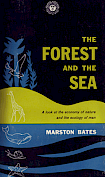
As a Master's student at the University of Alaska, I was attracted to the book The Forest and the Sea because of the evocative title. I was studying the leaf canopies of seagrasses and became intrigued by comparisons with leaf canopies of forests, thus my interest in the title. What I found in reading the book was much more than a book about nature, but about how humans interacted with nature. This connection between nature and human culture was woven in such a way that I began to appreciate how inextricably nature and human values are linked. The other aspect of reading a book featuring tropical rain forests made me want to experience the tropics, and I began to migrate closer to the equator over the next several decades.
Energy Flow in Biology, Harold Morowitz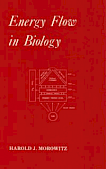
As I was finishing my Master's degree, a professor gave me a copy of Energy Flow in Biology by Harold Morowitz. He gave it to me after I had (by some miracle) successfully completed a graduate course in Physical Chemistry (P chem). This little book by a physicist about biology was profound and Morowitz's ability to distill the essence of biology into discrete and fundamental pieces was remarkable. Reading this book provoked my interest in investigating the underlying scientific basis of living things. It also showed me how physics, chemistry and biology were interrelated in nature. Energy Flow in Biology also made me aspire to do a PhD, as it made me want to be able to think deeply about nature.
Biophilia, E. O. Wilson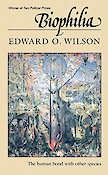
During my PhD at the University of Chicago, I read Biophilia by E.O. Wilson while conducting my thesis research in Woods Hole, and was taken by his thesis that humans loved living things. I was enjoying being immersed in seagrass meadows and coral reefs and loved to think that I was tapping into a primal human urge to be surrounded by life. I had recently met surgeons and found that they were enamored with marine biology just as I was enamored with surgery and gross anatomy. I concluded that we both had Biophilia, a love of life that we wanted to express by being literally immersed in living things: a human body or surrounded by living things underwater. Wilson's attractive writing and solid reasoning was enjoyable and I began to see that an academic career following one's passion was an attractive option.
The Woods Hole Cantata, Gerald Weissmann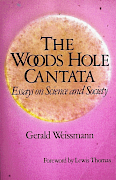
As I began my postdoctoral fellowship at Stony Brook, New York, the Woods Hole Cantata by Gerald Weissmann was recommended to me by an erudite actor that I met through my Hollywood-based brother upon learning that I had just spent a few years in Woods Hole. This book, like Lives of a Cell, was a collection of essays by a physician that brought together literary allusions, science and nature. I enjoyed Weissmann's emphasis on avoiding reductionist science as I was aspiring to think more synthetically. The description of the buzz of excited chatter following Friday night lectures at the Marine Biological Laboratory described my feelings accurately, as I continued to visit Woods Hole regularly. The blend of science and humanities by Weissmann was an inspiration to me.
The Structure and Distribution of Coral Reefs, Charles Darwin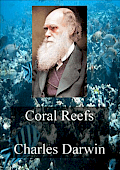
At the University of Queensland, I had the opportunity to study and teach on the Great Barrier Reef. I rediscovered the brilliance of Charles Darwin in his first science book, The Structure and Distribution of Coral Reefs. I loved the woodcut figures illustrating Darwin's theory of the formation of coral reefs, and his poetic metaphor of corals as monuments marking the burial of extinct volcanoes. Darwin's clarity of thought created a hypothesis of how coral reefs were formed that could not be tested for over a hundred years, but was supported and made Darwin seem prescient. The part of the book that I found particularly amazing was the careful map that Darwin assembled through extensive correspondence with ship captains and naturalists around the world. Darwin mapped areas of coral atoll subsidence and uplift and from his writing, he appears that he was on the cusp of discovering plate tectonics, but was lacking enough data. Darwin's book inspired me to be a better science communicator.
Scholarship Reconsidered: Priorities of the Professoriate, Ernest Boyer
When I was interested in joining the University of Maryland Center for Environmental Science to lead the Integration and Application Network, the book Scholarship Reconsidered: Priorities of the Professoriate by Ernest Boyer was recommended to me. Boyer describes four elements of scholarship; discovery, integration, application and teaching, and this description of a multifaceted suite of academic pursuits resonated deeply with me. At the University of Queensland, I had begun to do more applied research and write synthesis books for broader dissemination than to my scientific peers. Boyer's short, succinct book allowed me to begin to form a vision of what the Integration and Application Network could aspire to achieve and helped convince me to make this career transition.
Pasteur's Quadrant: Basic Science and Technological Innovation, Donald Stokes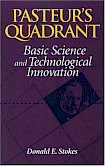
As part of an institutional review, a visiting reviewer observed that what we were trying to do at the University of Maryland Center for Environmental Science was to achieve 'Pasteur's Quadrant'. I eagerly read Donald Stokes' book to find out what it meant to be in 'Pasteur's Quadrant'. Stokes described the French microbiologist Louis Pasteur doing both use-inspired research and understanding-inspired research. The book inspired me to rekindle my interest in seagrasses while continuing my integration and application activities. Pasteur's Quadrant also inspired me to look for examples of scientists who combined use-inspired and understanding-inspired research.
Reviewing this list of my favorite books over my career, I can see that their impact was related to the stage of my career when I read them. As much as these particular books have meant to me, I would not likely recommend this complete set to anyone else, as their relevance was dependent on where I was at the time I read them. A big part of why these books made my top ten list was that they provided me with some aspirational goals that affected my career path. Another common feature is that they are relatively short books, but they packed big ideas and communicated them effectively. They were books that I would have liked to have written myself. The clarity of thought expressed by the authors was an inspiration. A measure of their impact is that I have revisited them on occasion, something that I do not tend to do with books. These ten books have served as milestones on my career journey.
About the author
Bill Dennison

Dr. Bill Dennison is a Professor of Marine Science and Vice President for Science Application at the University of Maryland Center for Environmental Science.

